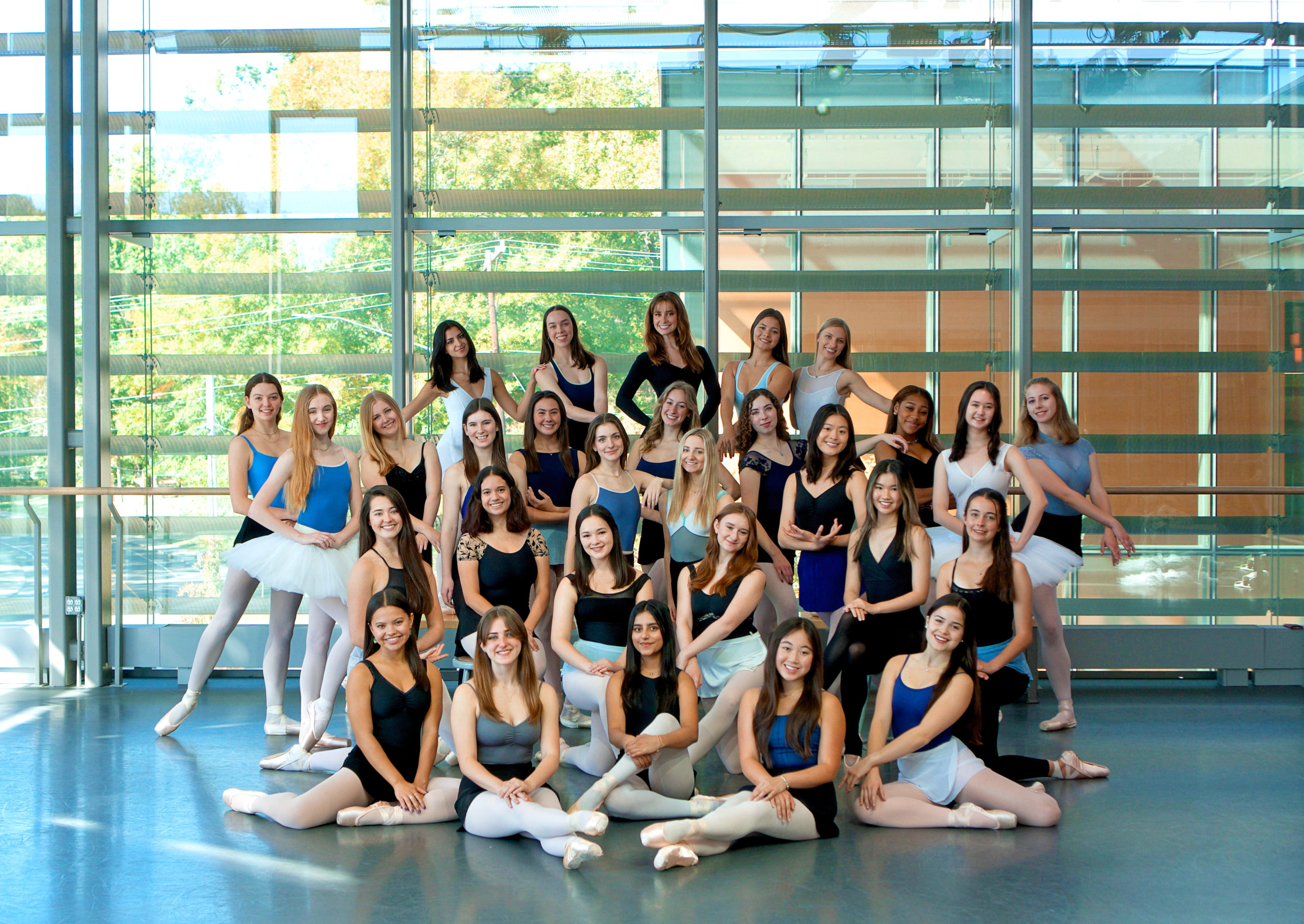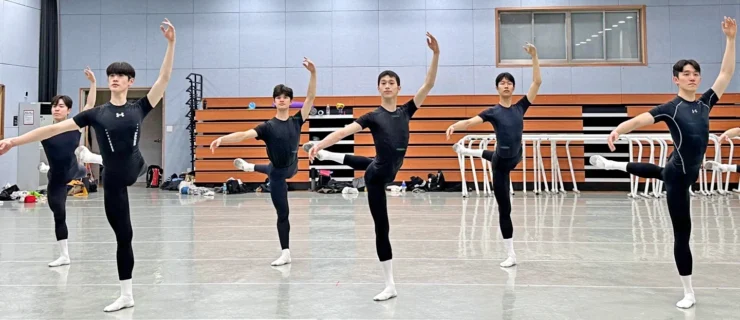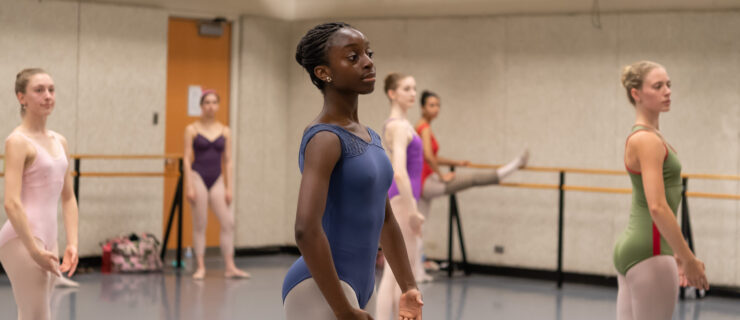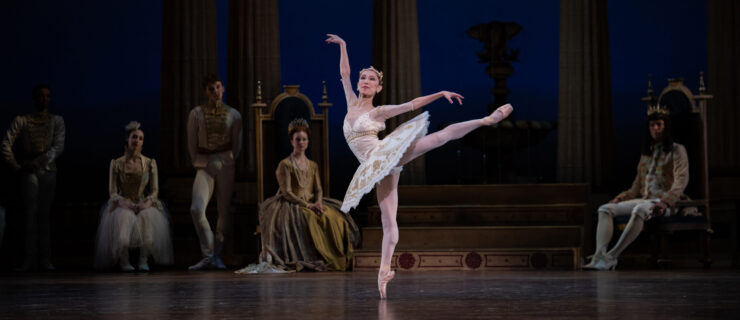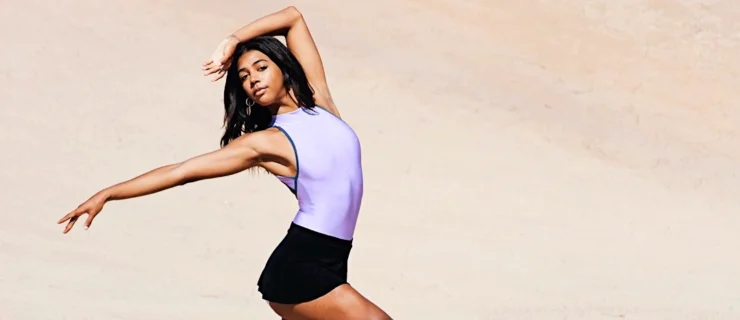College Dance Companies Can Be a Fulfilling Alternative for Nondance Majors
Growing up, Gabrielle Miller had one goal in mind: to become a professional ballet dancer. And after attending American Ballet Theatre’s Jacqueline Kennedy Onassis School for her senior year, she was well on her way. She planned to audition for companies that spring and apply to colleges as a backup. Yet by the time she found out she’d been accepted to Wake Forest University in North Carolina, she was feeling burnt out on ballet and decided to change course. Now midway into her freshman year, Miller is still dancing nearly every day as a member of the Wake Forest University Dance Company while pursuing a degree in health and exercise science. “I’ve found a perfect balance between challenging academic courses and fulfilling dance classes and opportunities,” she says. “I’m certain I’ve made the right choice.”
When looking at colleges as a serious ballet dancer, the options can feel black and white: Give up ballet completely to study English or econ or declare a major in dance. But some schools have highly rigorous on-campus ballet companies, allowing students like Miller to find a middle ground—and, in many cases, develop a happier and healthier relationship to ballet.
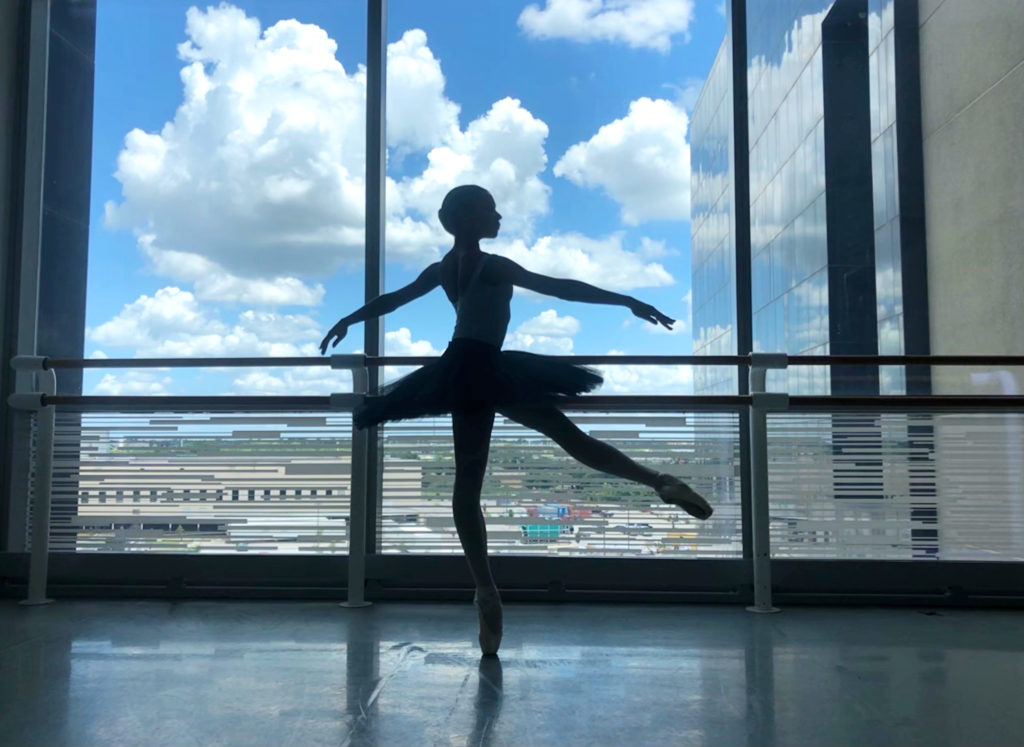
Varied Training and Performance Opportunities
Unlike most college dance companies, which are student-run, Wake Forest’s is part of the Department of Theatre and Dance, which offers a dance minor. Yet members don’t have to declare a minor to join. “The company auditions are held each fall, and anybody can audition,” says professor Nina Lucas, the department chair. As Wake Forest University Dance Company’s artistic director, Lucas produces six to eight pieces in the fall for the Fall Faculty Guest Artist Concert, usually a mix of new choreography by faculty and guest artists and classical ballet excerpts, along with work in jazz and modern. Every spring, there’s the Student Choreographic Concert, which can include classical and contemporary ballet, jazz and modern styles.
Miller is currently rehearsing variations from Don Quixote, as well as a contemporary ballet. The rest of her weeks are filled with technique class through the department, assisting open community class for younger dancers in the Winston-Salem area, and—in the spirit of experimentation—tap club and working backstage in the on-campus theater organization.
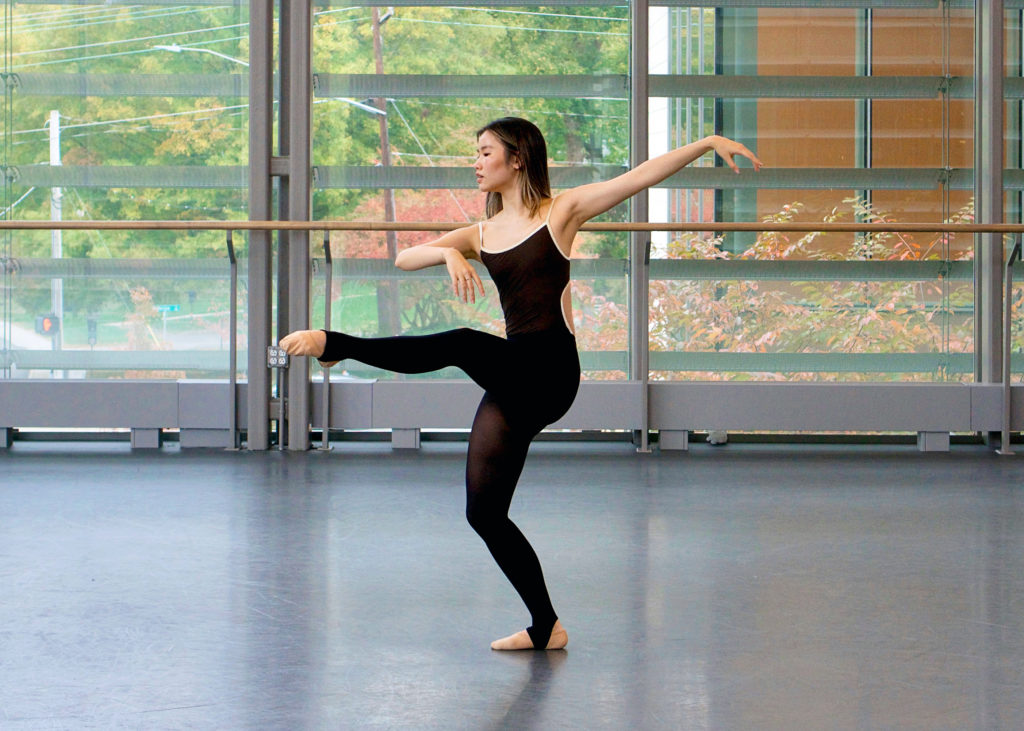
Similarly, Duke University senior Alyssa Shi says she rarely goes a day without setting foot in the school’s studios. Shi, a premed statistics major, is also president of Devils en Pointe, Duke’s ballet company. While a professional ballet career was never her plan—she says her family expected her to pursue higher education in STEM—she hated the idea of giving up dance in college.
Devils en Pointe works closely with Duke’s dance department and requires that each member take at least one class within the dance department per semester. Yet it’s entirely student-run: The group puts on a production of Nutcracker excerpts each fall and a more varied show in the spring that primarily features student choreography in collaboration with other arts groups on campus. Devils en Pointe also seeks out creative performance opportunities: Since joining, Shi has danced at Duke basketball half-time shows and at the Nasher Museum of Art. The group comes together each Saturday for a student-taught company class.
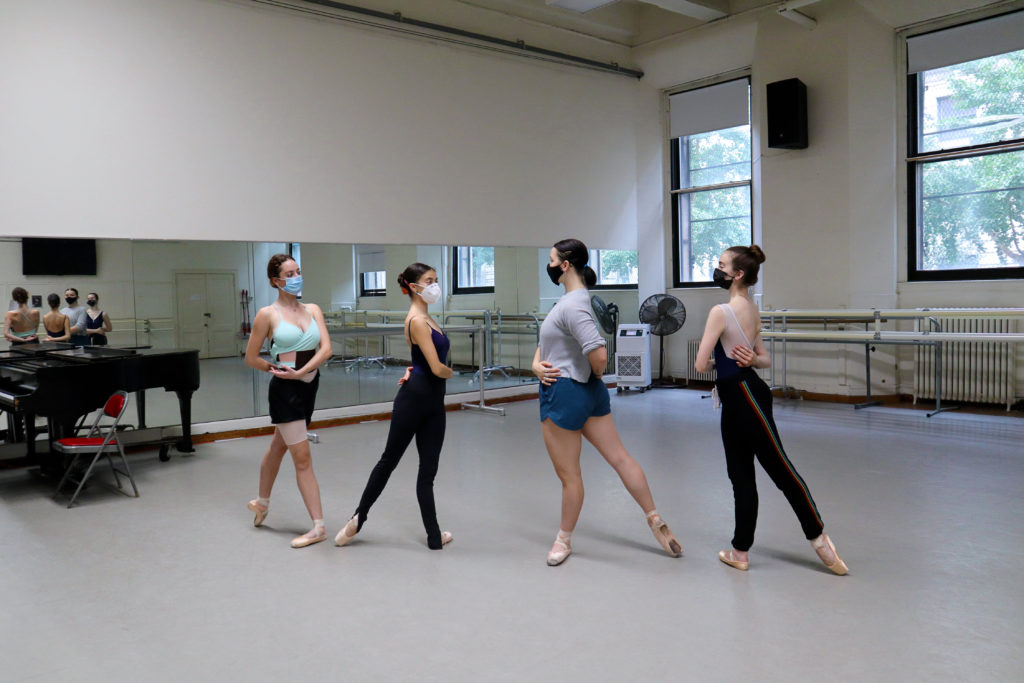
Weekly company class is also a beloved feature of Columbia Ballet Collaborative at New York City’s Columbia University. “It’s nice because people who aren’t cast that semester can still come,” says CBC artistic director Willa Broderick, a junior at Columbia College studying sustainable development and a graduate of Boston Ballet’s pre-professional program. Both she and CBC’s executive director, junior Madeline Angelides, supplement CBC class and rehearsal with technique classes through the affiliated Barnard College’s dance department. Angelides, who attended The Rock School, is pursuing a combined major in economics and statistics at Barnard. The duo produce CBC’s twice-yearly performances, which showcase a mix of guest and student choreographers and classical repertoire. This fall’s lineup includes choreographer Courtney Cochran and Black Iris Project artistic director Jeremy McQueen, among others. “It truly functions like a mini dance company,” says Angelides. “Just one that’s run by 20-year-olds.”
Unlike other student companies, the Harvard Ballet Company is also open to dancers without a Harvard University affiliation: Some members are students at nearby Northeastern University, Boston University and Tufts University, while others are young professionals. HBC offers a weekly company class, which company members supplement with noncredit community classes at the Harvard Dance Center (taught by Boston Ballet principal John Lam) or at the nearby José Mateo Ballet Theatre.
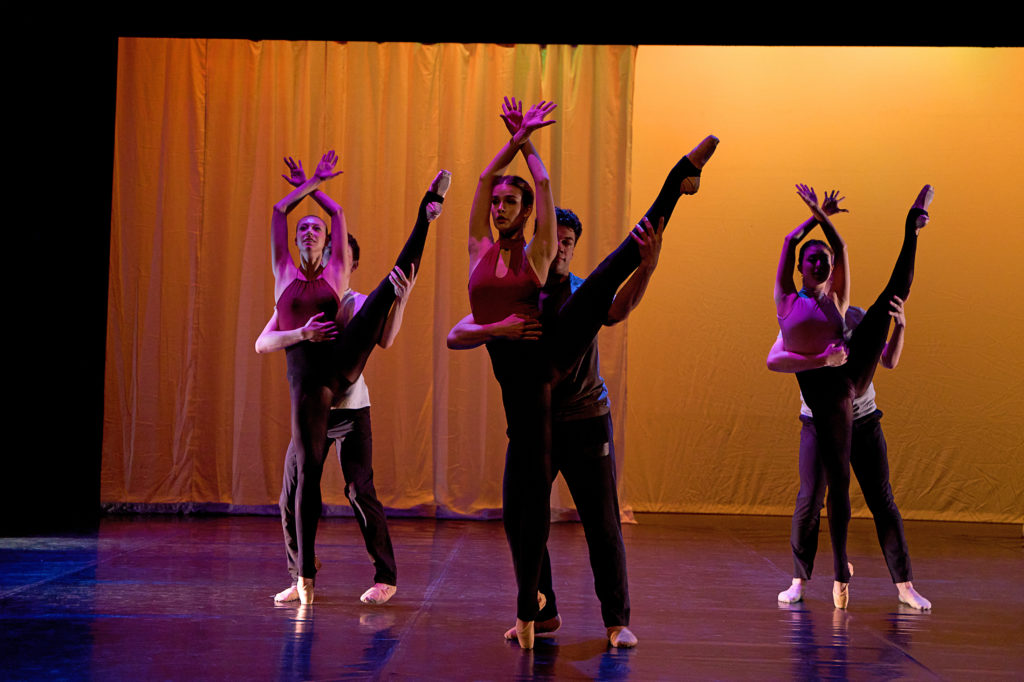
Like CBC, HBC relies on a robust network of guest and alumni choreographers in addition to its student dancemakers. Recently, the group has commissioned works by Telmo Gomes Moreira and Harvard alumna Claudia Schreier. “It’s all the best parts of ballet,” says HBC co-director Nina Montalbano, who was a member of the Ballet Chicago Studio Company before college. “It’s the fun and the community and the flexibility to choose to dance however much you want.”
Community Forward
Belonging to a college ballet company can lead to benefits beyond the studio. The first is networking, which in CBC often takes place within the alumni community. “This is our 16th year in existence, so we have this pretty long, established history and reputation,” says Angelides. For Shi, building connections at Duke has led to an unexpected professional opportunity: After graduation, she plans to stay in Durham and dance for her professor Iyun Harrison’s company, Ballet Ashani, while applying to medical school.
Staying involved with dance also gives college students opportunities to meld their interests. Shi works as a student researcher at the Duke Dancer Wellness Clinic; HBC’s co-director Sara Komatsu has spent the past two summers interning at the Vail Dance Festival. “I don’t know if interning there would have crossed my mind as a company dancer,” says Komatsu, an English major who took a leave from Harvard her sophomore year to attend The Rock School’s pre-professional program. “And I don’t know if I would have had access to that opportunity.” Directing CBC has also made Angelides reconsider her next steps. “This role has made me a bit more interested in what arts administration would look like,” she says.
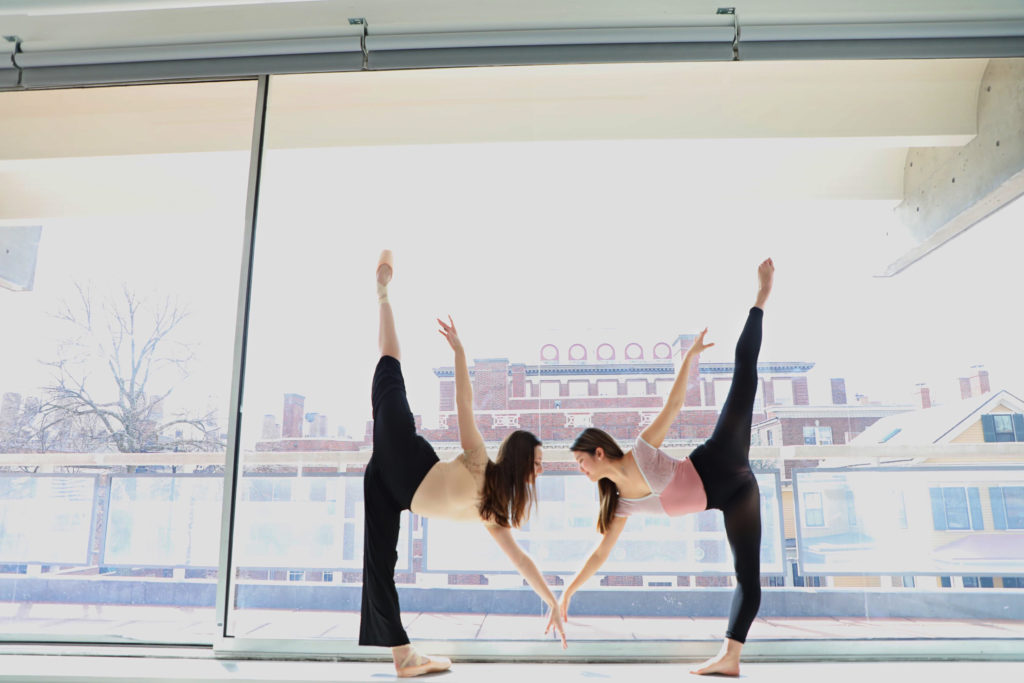
But across the board, what these dancers love most about their college ballet companies is the sense of community. “You already have this baseline common ground with people,” says Komatsu, stressing that HBC hosts regular socials. “It’s nice to be able to join this organization and have fast friends immediately.” In a dance world often fraught with competition, Broderick says that CBC feels like an equalizer. “There’s something unique about everyone having made the choice to keep ballet in their lives no matter what they’re studying,” she says. Angelides agrees: “CBC can be a very healing experience for a lot of people,” she says. “You’re dancing at a high level, but it’s much more community-focused.”
College Search Advice
While admissions listings are a good place to look when it comes to dance department offerings, student-led dance companies can be trickier to find. Start with Google and the Dance Magazine College Guide (published by Pointe’s parent company, Dance Media), as well as Instagram and YouTube. And don’t be afraid to reach out via email or direct message—many groups allow prospective students to take class. And if class isn’t possible, dancers are often thrilled at the chance to answer questions and share their experiences.
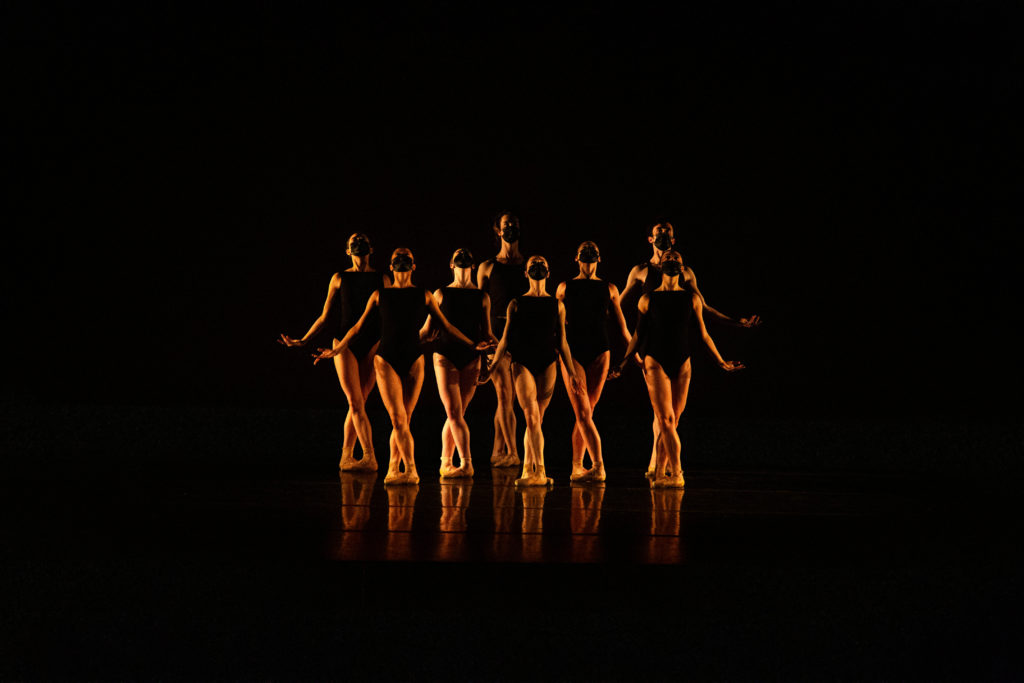
Most of all, when researching colleges remember that there are more than just a few ways to keep ballet in your life. Montalbano says she dances for herself now, rather than for directors or auditions: “It’s been a big shift in mindset—and it’s probably more healthy.”
“Those of us in the ballet company find it extremely fulfilling,” adds Komatsu. “Some of us are using it as retirement, but some of us are using it as a very serious way to keep up their dancing.”
